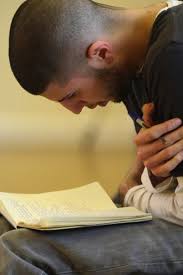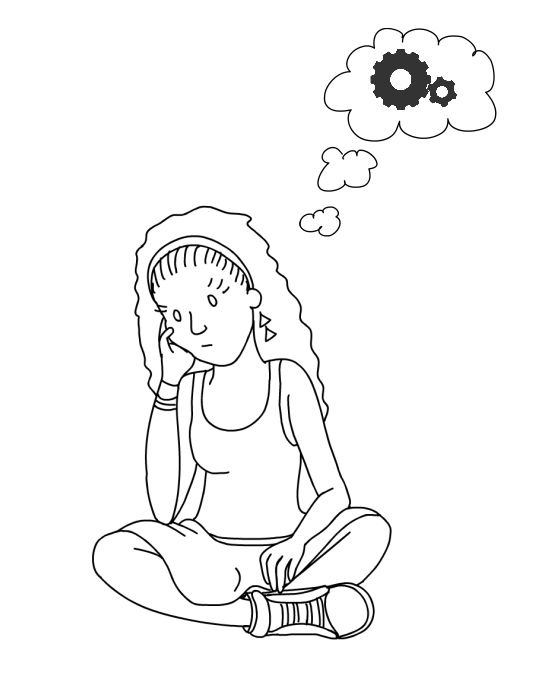
On January 19th we will launch our Future Fiction Challenge—I hope you plan to enter, and look forward to reading your story of an educational future in which “museums play a starring role.”
 Why did we opt for stories, rather than straightforward statements, as the focus of the challenge? (“I hope in the future museums will do x, y, z.”) A story can bring potential futures to life—good stories are emotionally compelling, immersing the reader in a world that could come to pass. And stories can help us explore the implications of any given future—how would it affect peoples’ day-to-day lives? What would it be like to eat, sleep, learn, love or work in that future? We believe stories from a variety of stakeholders—people who work in museums, educators, futurists, parents—will help museums explore how they can play a bigger, more central role in the next era of education.
Why did we opt for stories, rather than straightforward statements, as the focus of the challenge? (“I hope in the future museums will do x, y, z.”) A story can bring potential futures to life—good stories are emotionally compelling, immersing the reader in a world that could come to pass. And stories can help us explore the implications of any given future—how would it affect peoples’ day-to-day lives? What would it be like to eat, sleep, learn, love or work in that future? We believe stories from a variety of stakeholders—people who work in museums, educators, futurists, parents—will help museums explore how they can play a bigger, more central role in the next era of education.
Perhaps you haven’t flexed your fiction writing muscles recently. You can use the worksheet, below, as a warm up exercise, and to help frame your story. It will prompt you to identify the main character and the most important forces shaping the future he or she inhabits. It also suggests some forms your story might take (e.g., journal entry, letter to a parent from an educator, tweet stream from a learner). (I adapted the worksheet from material in the Institute for the Future’s Governance for the Future: An Inventor’s Toolkit, and you might enjoy taking a look at that resource.) Skip over related stories to continue reading article
 Why did we opt for stories, rather than straightforward statements, as the focus of the challenge? (“I hope in the future museums will do x, y, z.”) A story can bring potential futures to life—good stories are emotionally compelling, immersing the reader in a world that could come to pass. And stories can help us explore the implications of any given future—how would it affect peoples’ day-to-day lives? What would it be like to eat, sleep, learn, love or work in that future? We believe stories from a variety of stakeholders—people who work in museums, educators, futurists, parents—will help museums explore how they can play a bigger, more central role in the next era of education.
Why did we opt for stories, rather than straightforward statements, as the focus of the challenge? (“I hope in the future museums will do x, y, z.”) A story can bring potential futures to life—good stories are emotionally compelling, immersing the reader in a world that could come to pass. And stories can help us explore the implications of any given future—how would it affect peoples’ day-to-day lives? What would it be like to eat, sleep, learn, love or work in that future? We believe stories from a variety of stakeholders—people who work in museums, educators, futurists, parents—will help museums explore how they can play a bigger, more central role in the next era of education.
Perhaps you haven’t flexed your fiction writing muscles recently. You can use the worksheet, below, as a warm up exercise, and to help frame your story. It will prompt you to identify the main character and the most important forces shaping the future he or she inhabits. It also suggests some forms your story might take (e.g., journal entry, letter to a parent from an educator, tweet stream from a learner). (I adapted the worksheet from material in the Institute for the Future’s Governance for the Future: An Inventor’s Toolkit, and you might enjoy taking a look at that resource.) Skip over related stories to continue reading article
Some basic parameters of the challenge: set your story in the year 2040. It should focus on children served by what we currently call P-12 education (though “grades,” or “schools” for that matter, may or may not be important in the future you create). While we anticipate the majority of our entries will be text essays (maximum length 2000 words), you are welcome to submit photos, artwork, video, sound recordings or heck, pretty much anything that conveys a future of education. The worksheet is applicable to any of these formats.
First, choose a shortcoming of the current P-12 school system your story will address:
Here are some key weaknesses identified by participants in our 2014 education convening and by other organizations working on education reform:
Inequitable
Industrialized
Out of date/anachronistic
Disconnected from real-world life and work
Boring
Slow to respond to change
Other: ________________________________
Who is the subject of your story?
Name
Age
Gender/sexual orientation
Location
Family
Socioeconomic status
Special challenges
Choose three values you want the learning system in your story to embody. For example:
Equitable
Passion-based
Personalized
Adaptable/flexible
High quality
Affordable
Hands-on
Social
Other(s):______________________
Choose at least one “design mechanism” through which the future in your story will tackle the failure you chose:
(I find this to be the least intuitive of the worksheet categories. Another way to think of this is “what lever will you use to create change?”)
Cultural norms
Law/policy
Markets (economics)
Built environment (urban design, architecture, transportation)
Technology
Commons (self-organized and participatory solutions)
Choose one aspect of human nature that is core to your story. For example:
Altruism
Self-Interest
Curiosity
Ambition
Sociability
Aggression
Other: ___________
What role(s) does a museum/museums play in the story? For example:
Source of inspiration
Provider of learning resources
Place to learn
Source of mentors/instructors
Opportunities to do real work
Respite/refuge
Other: ________________
Choose the form your story will take. For example:
First person narrative “I…”
Third person narrative “She….”
Diary entry
“What I did this summer” essay
Report from an educator to a parent
News item
Tweet stream from a learner
Other:___________________
The submissions will be judged by a panel recruited from a variety of sectors (museums, education, policy, futurism) assessing how well the story:
- explores a fundamental shift in P-12 education by either filling a void or solving a problem in P-12 education.
- capitalizes on the primary strength of museums—access to original objects, while also showcasing your artistic freedom to exaggerate and invent fictional worlds.
- inspires wonder, awe, and sheer unbridled joy of learning.
- is clearly written and thoughtfully organized.
Please unleash your creativity and imagination—try to stay in the Cone of Plausibility, but feel free to stray to the very edges of what you think will be possible in 2040. If you get stuck, daydream a bit. What kind of learning experience would you want to have, if you were a kid again in 2040? What kind of experience do you want to create for your kids or grandkids? What great things do you see happening in a museum somewhere today (maybe yours!) that could make a phenomenal impact if scaled up and integrated into mainstream learning?
Instructions for submitting your entry, along with sample stories, will live on CFM’s new Future of Education website, launching January 19. That site will also host our search for the new Ford W. Bell Fellow for Museums and P-12 Education. (I will dedicate a blog post later this month to that search. Spoiler alert—applicants for the fellowship will be required to enter the challenge.)
You can direct questions about the Challenge to CFM project coordinator Sylvea Hollis at futureofeducation (at) aam-us.org.
Now, go forth and write!
Now, go forth and write!










Comments